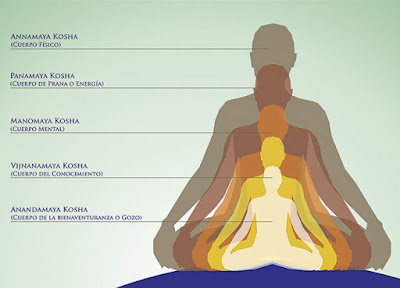La quintaesencia del trabajo interior momento a momento
Métodos para desidentificarnos de las tendencias egoístas, impulsos. deseos, emociones, pacificarlas y reducirlas y conectar con la paz silenciosa interior.
Para vivir momento a momento conscientemente y trabajar con nuestra psicología hace falta estar en alerta, auto-vigilancia, auto-consciencia y autoobservación consciente.
Para mantener el estado de vigilancia, atención plena y auto-consciencia (estar en conexión consciente con el silencio interior), profundizar en el silencio y purificar la mente nos ayuda repetir un mantra con el nombre de Dios ('Om Namá Shivay' por ejemplo), repetir afirmaciones de nuestra naturaleza verdadera ('Soy Brahman', Om Brahman', o 'Soy Conciencia, Om Conciencia', etc.).
Para estar más atentos y más conscientes, para evitar repetir mecánicamente el mantra o la afirmación y profundizar en el silencio, nos preguntamos de vez en cuando: ¿Soy este momento consciente del silencio interior? ¿Vivo aquí y ahora la paz interior? ¿Dónde está mi atención? ¿A Quién surge todo eso, Quién Soy?
Aún así ya que el ego sigue vivo en nosotros es cierto que las tendencias egoístas (emociones y pensamientos negativos, deseos, impulso, etc.) seguirán expresándose según las circunstancias.
Mientras intentamos mantener la calma mental-emocional y vivir atentamente y en conexión consciente con el silencio y la paz interior, cada vez que se manifiestan en nosotros pensamientos, una emoción o una tendencia egoísta hacemos lo siguiente:
1. Notar y tomar consciencia de los pensamientos, emoción, sentimiento, o deseo que se está expresando en nosotros. Cuanto màs atentos y presentes somos y más pronto nos damos cuenta de que se expresa algo en nosotros, más fácil será no identificar con esto y tomar medidas para pacificarlo y disminuirlo.
Sí somos bastante establecidos en el silencio y atentos, el mero hecho de atestiguarla sin Identificar es bastante para hacerla desaparecer.
2. Aceptar, no resistir y no reaccionar a lo que surge en nosotros, especialmente a emociones fuertes, defectos y debilidades que tenemos dificultad a aceptar que existen y se expresen en nosotros. Esto es un paso importantísimo que nos ayuda a no identificar con la emoción (o cualquier tendencia), no permitir suceder cualquier reacción por esta emoción y identificar con ella (por ejemplo enojo, vergüenza, miedo) y conectar con el silencio interior.
Para facilitar la aceptación podemos utilizar las siguientes preguntas:
¿Puedo darle la bienvenida?
¿Puedo aceptar que se expresa en mí?
¿Puedo sentirla sin criticarla, enfadarme, evaluarla?
Sí hemos desarrollado bastante la conexión con el silencio interior y el sattva en la mente la aceptación y la no identificación se hace más fácil o sin la necesidad hacer algo.
3. Profundizar en el silencio. Podemos conectar más profundamente con el silencio usando los siguientes métodos:
Sintiendo el cuerpo y el Yo Soy. Nos faciliten hacer esto las siguientes preguntas:
¿Puedo sentir mi cuerpo?,
¿Puedo sentir que Soy?,
¿puedo sentir el silencio interior
Preguntando directamente
¿puedo sentir el silencio interior?
A través de la auto-indagación ¿Quién Soy?
Nos preguntamos:
¿A quién surge esta emoción? A Mí.
¿Quién Soy? Y conectamos con el silencio.
o ¿Soy la emoción o lo que percibe la emoción?
Repitiendo el mantra 'Om, alargando el sonido,
Oooooommmm..., Oooooommmm..., Oooooommmm...,
Recordando y afirmando nuestra naturaleza verdadera repitiendo afirmaciones de tipo:
No soy esta emoción, Soy pureza, paz luz y amor.
No soy esta emoción, Soy Conciencia pura, lucida y pacífica, etc..
4. Sentir cuidadosamente y plenamente la emoción. Sentimos plenamente la emoción, con curiosidad inocente para ser plenamente conscientes de ella y conocerla.
Podemos ayudar esto utilizando la siguiente pregunta:
¿Puedo sentirla plenamente?
¿Puedo amarla? Amar la tendencia que surge en nosotros tiene también el poder de disminuirla y calmarlas.
5. Atención alternativa. Para impedir la identificación y debilitar la emoción podemos 'jugar' con la atención. Alternativamente prestamos atención a la emoción (o cualquier tendencia) y al silencio interior. Al final sentimos la emoción arraigados lo más que sea posible al silencio.
6. Negar la realidad y la veracidad de los pensamientos. Para desidentificar de los pensamientos nos ayuda dudar y negar la realidad y la veracidad de los pensamientos. Nos ayuda a darnos cuenta que los pensamientos no son una realidad contemplar las siguientes preguntas.
¿Esto que pienso es una realidad o solo pensamientos que suceden en mí?
¿Si no pienso sobre esto dónde existe?
O decir,'estos son solo pensamientos'.
O cuestionar lo que pensamos a través de preguntas como por ejemplo: ¿Estos pensamientos es mi elección o suceden por sí mismos? ¿Son verdaderos realmente?
¿Porqué pienso en ello, o en el o ella, me ayuda esto de alguna manera vivir en paz, amor y felicidad? ¿Me benefician a mí o a él/ella de alguna manera?
7. Afirmar y enfocar en la naturaleza verdadera de la persona que nuestro ego quiere criticar, comentar o identificar para sentir placer. Podemos impedir la identificación y la expresión de la emoción y los pensamientos afirmando que la persona que vemos es paz, luz y amor. Podemos conseguir esto repitiendo lo siguiente:
'Te mando paz, luz y amor, Eres paz, luz y amor y te deseo vivir con paz, amor, salud y felicidad'.
'Eres paz, luz y amor, soy paz, luz y amor, todo es paz, luz y amor, solo paz, luz y amor existen'.
Om paz, Om luz, Om Amor, Ooommm, Ooommm, Ooommm'.
8. Hacer indagación enfocada y discriminativa para evitar la identificación, la seducción y disminuir la tendencia: Por atención plena y discernimiento separamos los pensamientos, imaginaciones e impresiones de la emoción, (o el impulso o cualquier tendencia) y nos damos cuenta de la proyección ilusoria de las emociones a los pensamientos o a las impresiones (las impresiones en realidad son también formas mentales creadas por y en nuestra mente).
9. Cambiar la impresión o la imagen mental para impedir la identificación y la seducción. Podemos impedir la proyección de la emoción en la imagen mental o en la impresión sensorial, la identificación y la seducción, creando en nuestra mente una imagen que no permite la proyección de la emoción en la imagen o la impresión sensorial. Por ejemplo, en vez de ver la apariencia de una mujer, creamos una imagen mental que la mujer aparece vieja o imaginamos el interior de su cuerpo y en vez de ver su apariencia vemos huesos, sangre, órganos, etc.
Podemos también contemplar en preguntas como estas: ¿Su pelo en si mismo tiene placer? ¿La imagen que veo en si misma tiene placer? ¿O es una proyección de mi lujuria al pelo o al pecho, etc.?
10. Soltar la emoción contemplando, en el hecho que todo final va a pasar. ¿Qué importancia tendrá esto después de unos días o 30 años? Nada. ¿Por qué no lo dejo ahora?
11. Soltar la emoción contemplando nuestra decisión y voluntad vivir libres de esto, utilizando las siguientes preguntas:
¿Quiero seguir con esto o ser LIBRE ? ¿Prefiero esto o la PAZ?
¿Cuándo quiero ser libre de esto? AHORA..
12. Finalmente reducir la emoción por la oración*, el mantra (Om, Om Hring Nama Shivay, Om Sri Durgaye Namaha, Om Krim Hrim, Srim, Durgaye Namaha, Om Sri Jesucristo Namaha, etc.) y afirmaciones positivas.
Observación importante
No es necesario utilizar en cada ocasión todos estos pasos sino todos aquellos que nos parecen más adecuados para conseguir los importantes objetivos del trabajo interior momento a momento.
Los importantes objetivos del trabajo interior momento a momento son:
1. Estar atentos, vigilantes, auto-conscientes*, atestiguando todas las reacciones psicológicas, corporales y energéticas y acontecimientos exteriores. No dejar los sentidos conectar con lo que nuestro ego quiere.
2. Notar los pensamientos y la tendencia egoísta que se expresa, (deseo, impulso, emoción negativa, imaginación lujuriosa, crítica, quejas, etc.).,
3. Evitar la identificación y la seducción,
4. Aceptar, no reaccionar a la tendencia egoísta,
5. Conectar lo más que sea posible con el silencio,
6. Sentir plenamente y cuidadosamente la tendencia,
7. Pacificarla y disolverla.
8. Regresar a la calma mental- emocional y la experiencia consciente del silencio y la paz interior, mantenerla y profundizar lo más que sea posible en ella,
9. Seguir atentos, vigilantes, auto-conscientes, atestiguando todas las reacciones psicológicas, corporales y energéticas y acontecimientos exteriores.
10. No dejar los sentidos conectar con lo que nuestro ego quiere.
Comenario
*Estar atentos, vigilantes, auto-conscientes: Para mantener el estado de vigilancia, atención plena y auto-consciencia (estar en conexión consciente con el silencio interior), profundizar en el silencio y purificar la mente nos ayuda repetir un mantra con el nombre de Dios ('Om Nama Shivay' por ejemplo), repetir afirmaciones de nuestra naturaleza verdadera ('Soy Brahman', Om Brahman', o 'Soy Conciencia, Om Conciencia', etc.).
Para estar más atentos y más conscientes, para evitar repetir mecánicamente el mantra o la afirmación y profundizar en el silencio, nos preguntamos de vez en cuando: ¿Soy este momento consciente del silencio interior? ¿Vivo aquí y ahora la paz interior? ¿Dónde está mi atención? ¿A Quién surge todo eso, Quién Soy?
La práctica en nuestro lugar
1. Meditación o auto-indagación (Vichara). Para desarrollar la capacidad de estar atentos y vigilantes, profundizar en el silencio interior y establecernos más y más en él, hace falta (es imprescindible) hacer diariamente (por la mañana y por la noche) en nuestro lugar meditación o auto-indagación (Vichara). Empezamos por un tiempo de 15 minutos por ejemplo y aumentamos el tiempo de la práctica gradualmente por 2-3 minutos cada mes hasta alcanzar meditar al menos 2 horas en cada sesión.
2. Introspección, investigación y disolución del ego. Para conocer y comprender más profundamente las tendencias egoístas y disolverlas hace falta hacer cada día una investigación y indagación más detallada y profunda en nuestra casa y utilizar métodos para disolverlas que no podemos aplicarlas en los momentos que se manifiestan.
3. Repaso de nuestra práctica durante el día. Al final del día es importante hacer también un repaso para evaluar nuestro esfuerzo durante el día, para ver que dificultades teníamos de mantener la vigilancia y la autoconsciencia, de evitar la identificación y pacificar las emociones, los pensamientos y las tendencias egoístas, así como que métodos nos ayudaron más a tener éxito en todo eso y también notar defectos y debilidades que nos impidieron a hacer con eficaz todo eso y tomar medidas para superarlos.
4. Para la purificación de la energía vital y la mente y el desarrollo integral de las cualidades sáttvicas se recomienda incluir una variedad de prácticas en el programa diario que hacemos por la mañana, la tarde y la noche en la casa. Unos de ellos son: Pranayama, relajación, repetición mental de mantra, cantar mantra y himnos devocionales, oración, afirmaciones positivas, asanas de Hatha Yoga, estudiar libros y reflexionar en sus ideas, ver videos con enseñanzas espirituales, hacer meditación caminando, comer de una manera meditativa (Hrani Yoga, -Omram Aivanhov).
Comentario
por la oración*: Una manera eficaz hacer de la oración para disolver el ego es el siguiente:
Interiorizamos nuestra atención dentro, nos conectamos con el silencio interior y decimos desde el corazón:
´Madre Divina (o Jesucristo, o Dios mio) elimina esta energía de la vergüenza y libera mi mente de la emoción de vergüenza e imprégname (o llena me) con paz, luz y amor´.
´Soy paz, luz y amor´, ´Soy luz, paz y amor´, ´Todo es paz, luz y amor ´, ´Ooommm, paz, luz y amor´, "Ooommm paz, luz y amor´, "Ooommm, Ooommm, Ooommm´. Mientras decimos estas palabras, profundizamos en el contacto con el espacio silencioso y la paz interior. Enfatizo que es muy importante sentir lo que decimos (no decir palabras vacías) y estar profundamente conscientes (lo más que sea posible en cada ocasión) del silencio interior.












